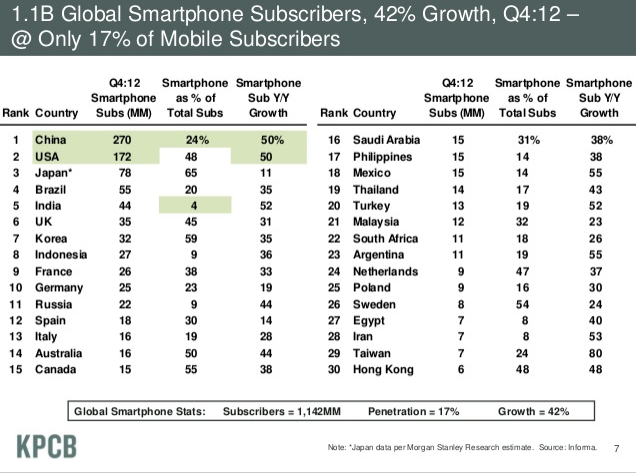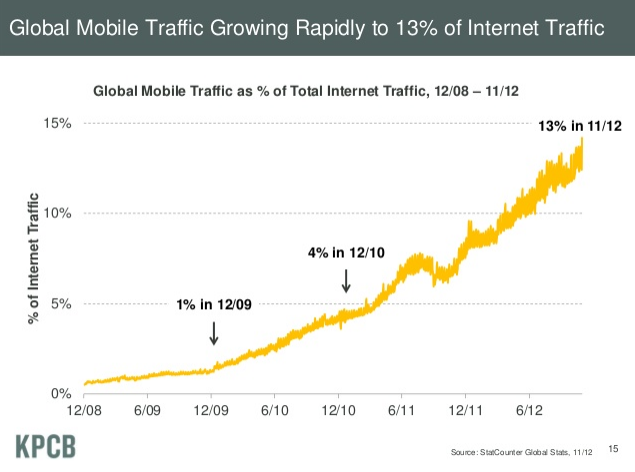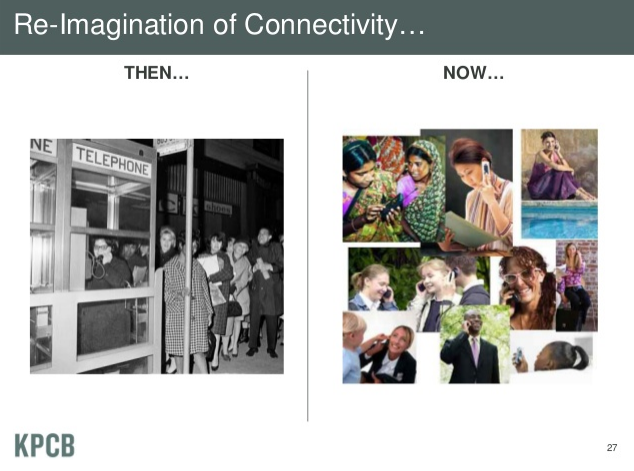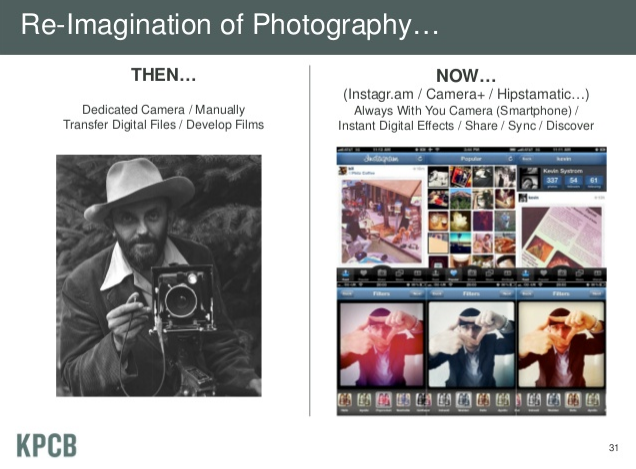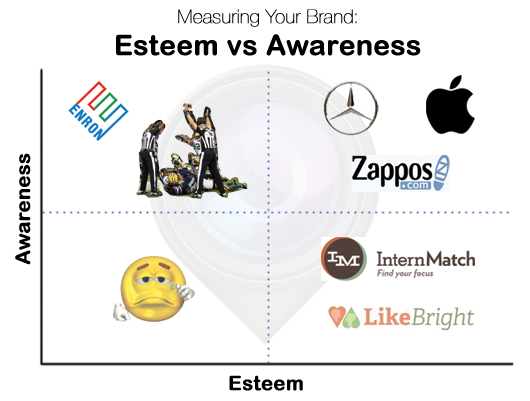Mary Meeker from the Venture Capital firm Kleiner, Perkins, Caufield, & Byers (KPCB) always kills it with her Internet Trends presentations, and I love it every time.
In particular, I love it because of how amazing the numbers have been for mobile. They’re incredible. It makes me feel all warm and tingly inside, seeing the graphs that portray a technological revolution we happen to be right in the middle of, right now.
You don’t even need a VC analyst to tell you that there’s big stuff happening in mobile lately. You can just look around and see it in every pocket – it surrounds us.
Think about how amazing this is: computing has brought about three waves now, each of them creating massive technological change (along with vast fortunes) from the period before. The first was the proliferation of the PC. Then there was the internet. For both of those waves, my generation was too young to really appreciate what was going on, let alone dive in and participate.
But this wave, mobile…
The first iPhone came out in 2007. I was 19, and had just finished my first year at University of Maryland. Like most people that age, I had just recently started considering the options for my future and would be for the next few years before graduation.
A couple months after that first iPhone came out, the economy hit the fan and everything turned to shit. Students started graduating into the crappy economy, and the “Jobless 20-Something” became a defining cliche of the time. My friends and I watched the value of our college degrees plummet to almost worthless, a year before graduation.
And then this happened:
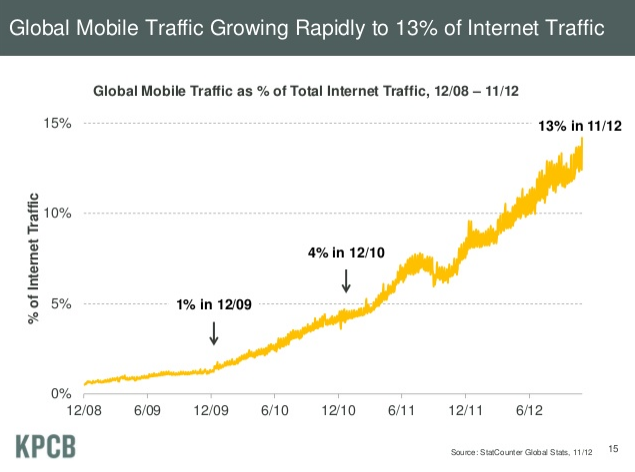
All of a sudden, a ray of light appeared amidst the frenzy of the shit economy, and that ray of light was mobile. A new wave of technology that brought a new wave of opportunities, value, and wealth.
This time, we weren’t too young. And we weren’t too old either – that’s very important. We weren’t 4-5 years down paths towards middle-management in office buildings anonymous.
We were young, jobless, and had nothing to lose. We were just right.
By now, it’s practically conventional wisdom that it’s never been easier to start a company. With basically zero start-up costs, infrastructure readily available, and the world’s knowledge at your fingertips – very little of the barriers to entry that existed just 10 years ago exist today.
And now we have the explosion of this new platform. The smartphone. Think about how incredible of a canvas this thing is. With the touch screen, it offers literally infinite possible interface options. It has a camera (or two), a compass/accelerometer, a speaker, a microphone, a light, and a headphone jack. It’s connected to the web, it’s always on, always around, and there’s millions of them. And that’s just for now.
Think about how many problems there are that can be solved with the right software on this canvas! And of course problems can translate into opportunities for business. You literally can’t put a number on how many business opportunities there are out there now. It’s effectively infinite.
Thus, it’s a beautiful thing Mary Meeker reports on. For a generation that graduated into an economy in the dumps, mobile has offered a beautiful silver lining. The chance to create tools that solve problems and create value for people, and build businesses around those tools.
We may have been to young for PC and the Internet, but this wave, mobile, is our wave.
